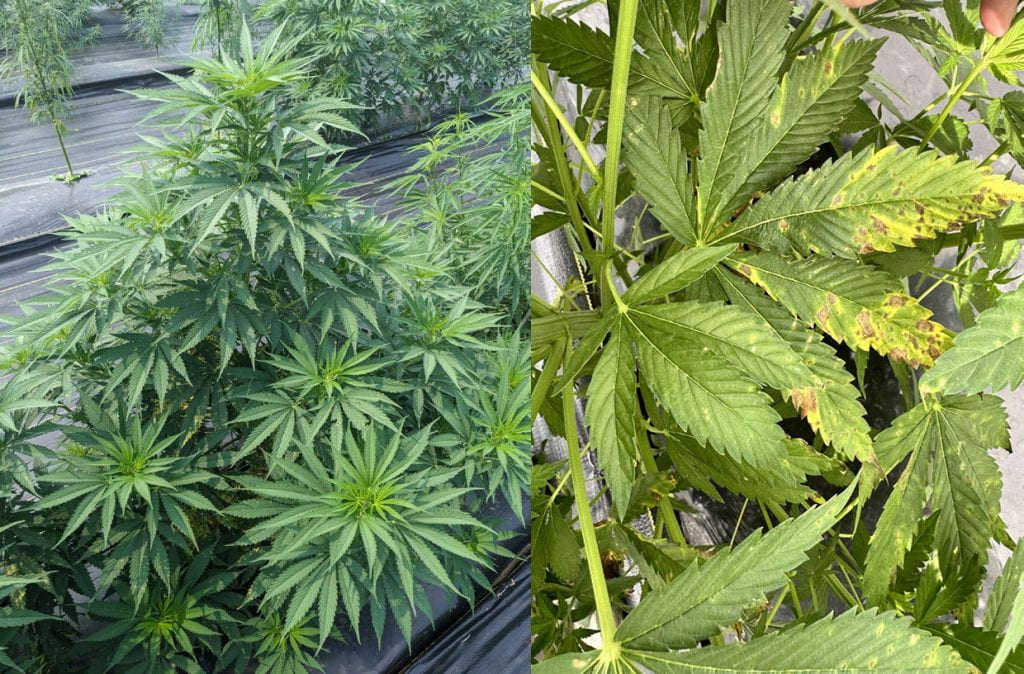Jocelyn Schwartz and Christine D. Smart
January 2024
Printer-friendly .pdf version of this factsheet.
Take home message:
Scouting for diseases should be an ongoing process throughout the growing season. Regular monitoring will help catch and manage diseases early, reducing their impact on hemp yields.

Top 3 recommendations
- Early and regular scouting are key to integrated pest management. Because insects are active at different times in the day, it’s important to switch the day and time of scouting.
- Implement a consistent scouting strategy to cover the entire field and ensure representative sampling. Scouting patterns that cover a greater area will be more representative but require more time and are more costly.
- It is vital to look the upper and lower leaf surfaces in addition to the top, bottom, and middle of the plant. Bring a hand lens to inspect plant damage and insects.
For expert advice concerning unhealthy plants, contact:

Diseases are often aggregated, meaning they could be clustered in wet spots with poor air circulation. You can’t trap the insects or see the pathogens until after symptoms are present. If the plant appears to be yellowing, wilted, or stunted, you should inspect the stem, crown, and roots of the plant.
Disease severity: measure of the extent of damage caused by a disease.
- Typically rated as a percentage of the total plant tissue that has disease symptoms. For example, a plant with no symptoms will have a rating of 0% while a plant that has extensive disease symptoms on all of its leaves will have a rating of 100%.
Disease incidence: measure of the presence or absence of a specific disease in a population of plants
- Typically rated as yes (any level of disease symptoms present) or no (no symptoms present).
Record-Keeping and Data Management
Maintain thorough and organized records of your scouting efforts. These records should include the location of affected plants, the date, growth stage of the hemp, and the specific symptoms or insect pests observed. Other data points to include:
- Are there hot spots in the field for disease or pests?
- Neighboring fields or environments that could serve as a reservoir?
- Weather conditions?
- Previous stressors that could make plants more susceptible to future pests/pathogens?
More information
- Jocelyn Schwartz jas975@cornell.edu
- Christine D. Smart cds14@cornell.edu